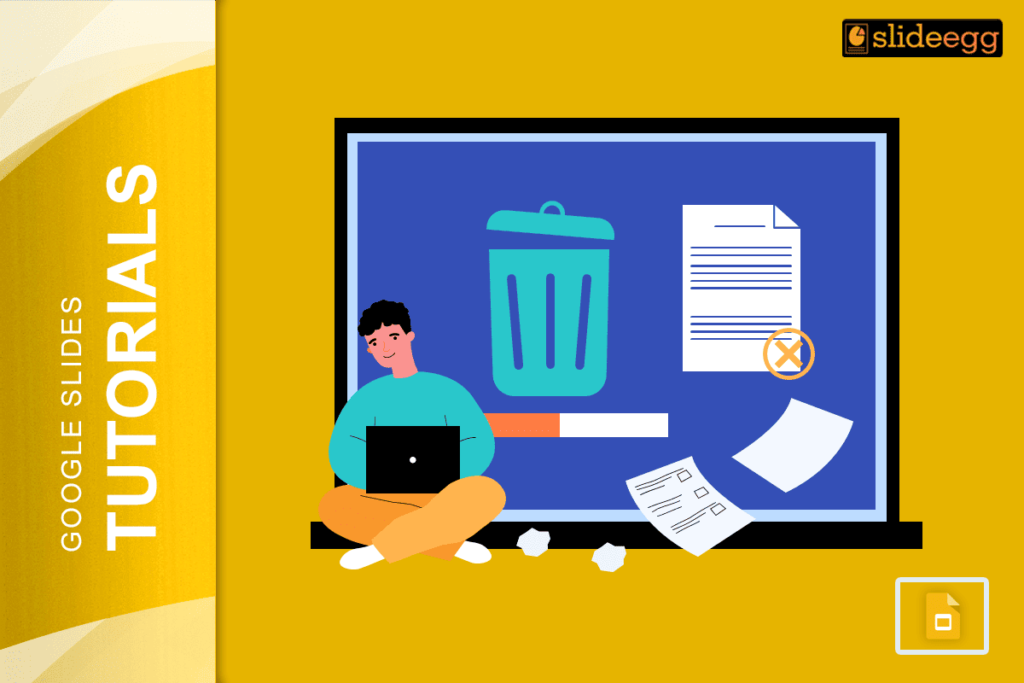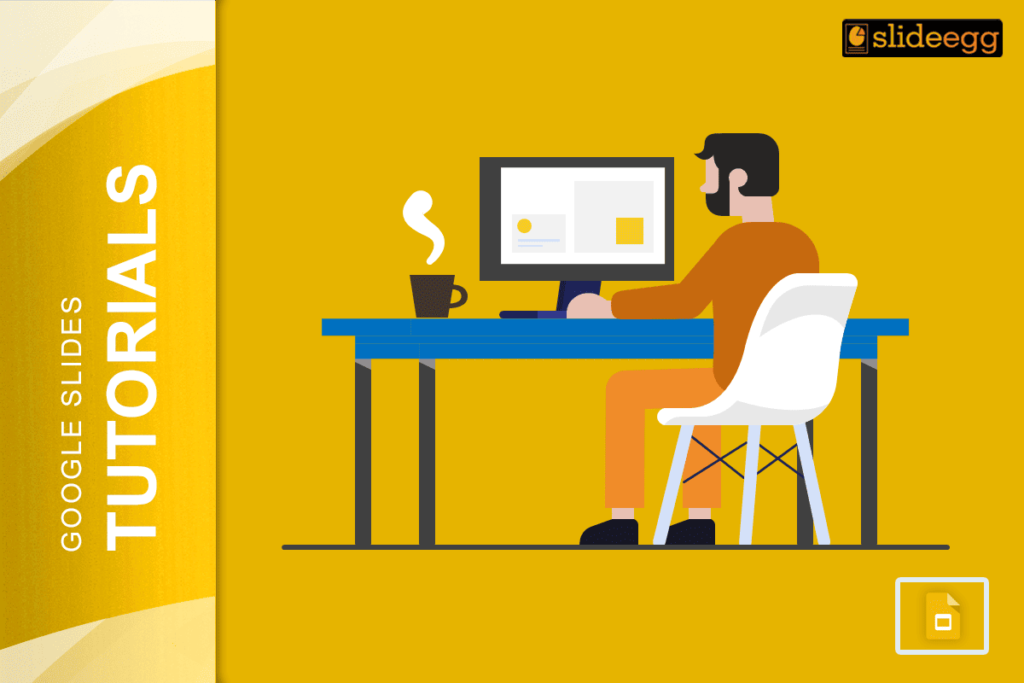| 🧠 Quick Tips: How to Track Changes in Google Slides ✅ Use Version History – See who changed what and when. ✅ Add Comments – Suggest edits without changing the slides. ✅ Use Suggesting Mode in Google Docs (linked content) – For scripts or speaker notes. ✅ Assign Comments – Keep track of who needs to do what. ✅ Name Versions – Label different versions to track stages. |
Introduction
“Feedback is the breakfast of champions.” – Ken Blanchard.
Google Slides is super useful for making presentations. Whether you’re working alone or with a team, knowing who did what and when is very important. This helps you stay organized and avoid mistakes. But, Google Slides doesn’t have a “Track Changes” button like Word. So, how do we keep an eye on changes?
Let’s break it down step-by-step, in the simplest way ever.
👀 Why Should You Track Changes in Google Slides?
Tracking changes helps you:
✅ Know who edited the file
✅ Undo mistakes easily
✅ Give better feedback
✅ Work smoothly with your team
✅ Keep everything on track
It’s super helpful, especially for group projects or work teams.
🛠️ Easy Ways to Track Changes in Google Slides
Let’s look at the best ways to track edits in Google Slides.
1. Use Version History
This is the main way to see changes.
👉 Steps:
- Open your Google Slides.
- Click File on the top menu.
- Choose Version History.
- Click See version history.
- You’ll now see a list of edits with names and dates.
- Click any version to see what changed.

📝 Tip: You can name versions to keep things neat. Just click the three dots (⁝) next to the version name and click Name this version.
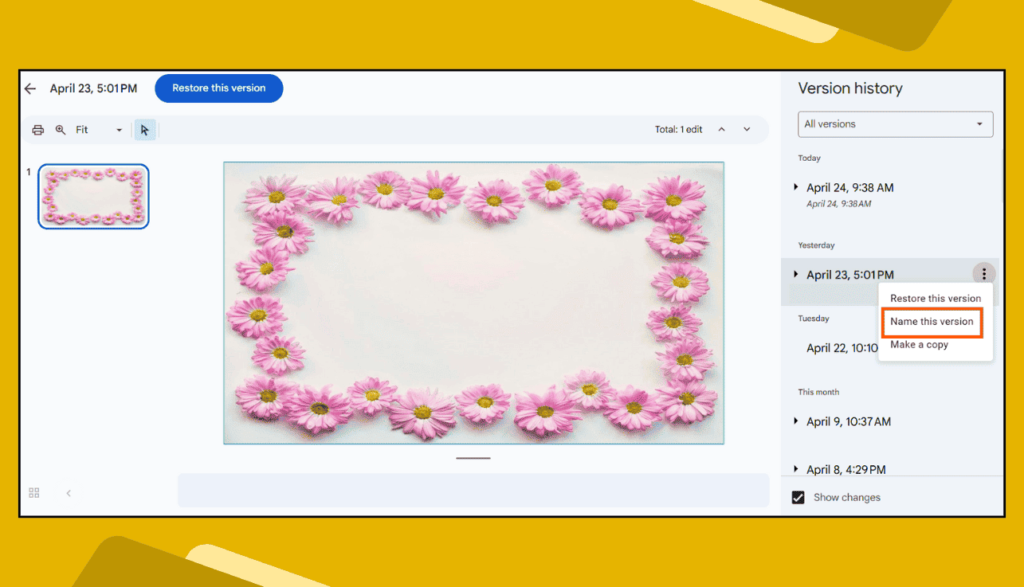
2. Leave Comments Instead of Editing Directly
If you’re reviewing someone else’s slides, it’s better to leave comments than to change their content directly.
👉 Steps:
- Select the part you want to comment on.
- Click the comment icon (it looks like a little speech bubble).
- Type your suggestion.
- Click Comment.

Others can reply or mark it as done!
3. Assign Comments to People
This is a cool little trick.
👉 Steps:
- When adding a comment, type @ and the person’s email.
- Google will ask if you want to assign the task to them.
- Click Assign.
Now they’ll get an email too.
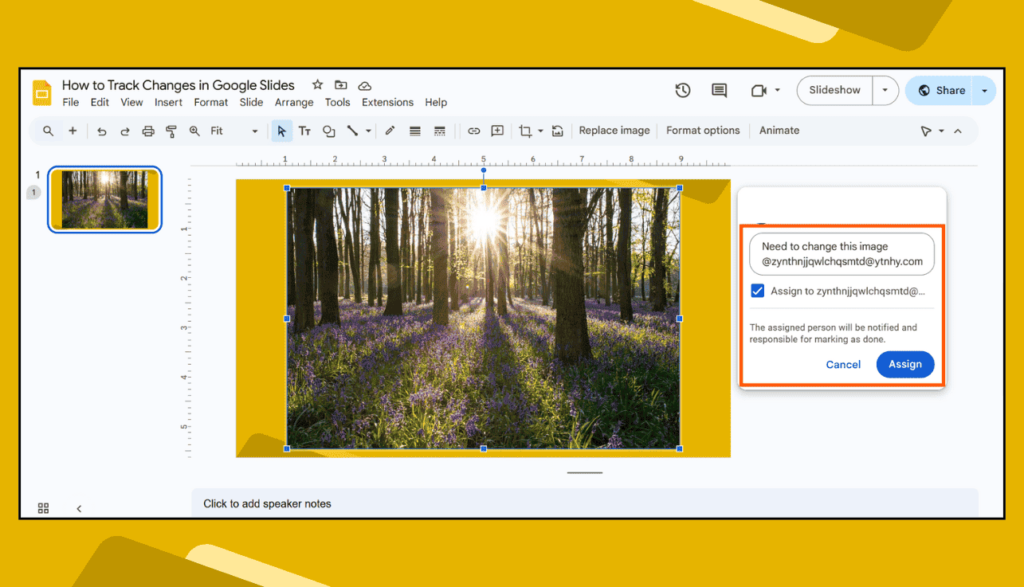
4. Use Linked Google Docs for Notes
If you’re writing speaker notes or script in a linked Google Doc, use Suggesting mode there.
👉 Steps:
- In Google Docs, click on the pencil icon in the top right.
- Choose Suggesting.
- Now your changes appear like suggestions.
- Others can accept or reject them.
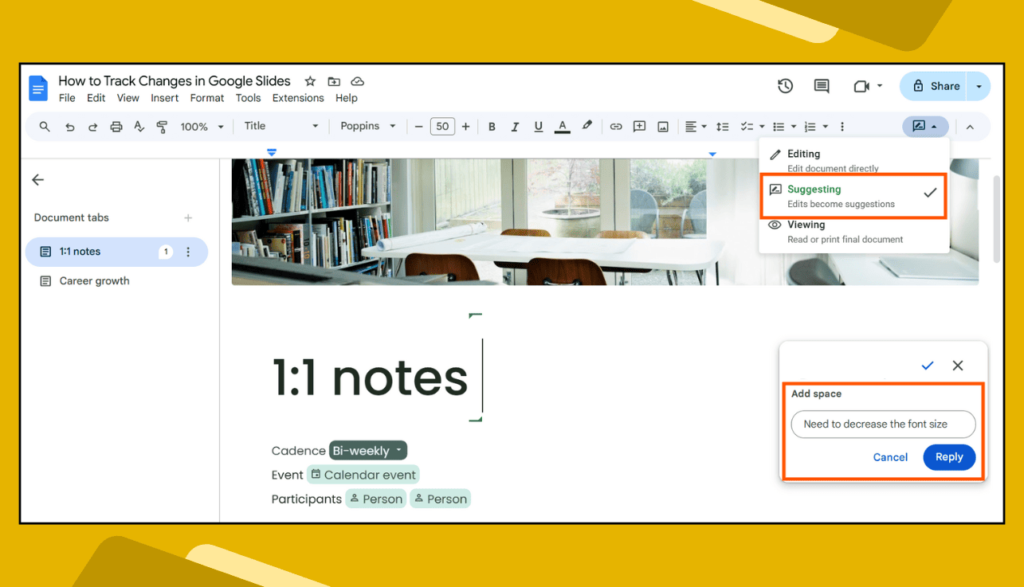
Even though Slides doesn’t have Suggesting Mode, Docs does! Use them together for a smart workflow.
🤔 FAQs: Track Changes in Google Slides
Q1: Can I turn on track changes in Google Slides like in Microsoft Word?
No, there’s no direct feature. But you can use version history and comments to do the same job.
Q2: Can I see who edited my Google Slides?
Yes! Go to File > Version History > See Version History. You’ll see the names and timestamps.
Q3: How can I suggest edits in Google Slides?
Use the comment feature. Highlight text or items, then click the comment icon and leave your note.
Q4: Is there a way to compare two versions of Google Slides?
Not automatically. But you can open two versions side-by-side and compare manually, or name versions for better tracking.
Q5: Will I lose old edits if someone makes changes?
Nope! Google saves everything. You can go back to any old version from version history.
🧩 Final Thoughts
Even without a “Track Changes” button, Google Slides gives you easy tools to stay on top of edits. By using version history, comments, and linked Google Docs, you can work like a pro—without getting lost in the edits.
So next time your team jumps into a project together, you’ve got the tools to stay in control and keep everything neat.

